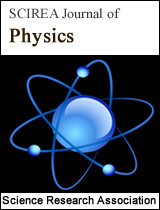A New Understanding to the High-Pressure Hydride Superconductors— Role of Hydrogen Atoms and Effect of Pressure
DOI: 10.54647/physics14333 115 Downloads 3020 Views
Author(s)
Abstract
A new understanding to the origin of superconductivity in hydrogen-rich materials under high pressure is presented in this paper. Applying sufficiently high pressure to a material makes its constituent atoms get close enough so that the “close-shell inversion” effect takes place, which in turn results in superconducting state in the material. Owing to light mass and single proton in their nuclei, under high pressure the hydrogen atoms can be relatively easier squeezed into the neighborhood of heavy ones, facilitating the “close-shell inversion” effect, and in turn realizing superconductivity in the material.
Keywords
High-Pressure Superconductivity; Hydrogen-rich Material; Mechanism of Superconductivity
Cite this paper
W.Z. Shangguan, Z.Cai, Z. Q. Huang, JiaWen Mo, XiangZhong Wei,
A New Understanding to the High-Pressure Hydride Superconductors— Role of Hydrogen Atoms and Effect of Pressure
, SCIREA Journal of Physics.
Volume 6, Issue 3, June 2021 | PP. 51-60.
10.54647/physics14333
References
| [ 1 ] | Drozdov, A. P.; Eremets, M. I.; Troyan, I. A.; Ksenofontov, V.; Shylin, S. I. Sep 2015, 525(7567), 73–76. |
| [ 2 ] | Drozdov, A. P.; Kong, P. P.; Minkov, V. S.; Besedin, S. P.; Kuzovnikov, M. A.; Moza¤ari, S.; Balicas, L.; Balakirev, F. F.; Graf, D. E.; Prakapenka, V. B.; Greenberg, E.; Knyazev, D. A.; Tkacz, M.; Eremets, M. I. May 2019, 569(7757), 528–531. |
| [ 3 ] | Somayazulu, M.; Ahart, M.; Mishra, A. K.; Geballe, Z. M.; Baldini, M.; Meng, Y.; Struzhkin, V. V.; Hemley, R. J. Jan 2019, 122, 027001. |
| [ 4 ] | Snider, E.; Dasenbrock-Gammon, N.; McBride, R.; Debessai, M.; Vindana, H.; Vencatasamy, K.; Lawler, K. V.; Salamat, A.; Dias, R. P. Oct 2020, 586(7829), 373–377. |
| [ 5 ] | Ashcroft, N. W. Dec 1968, 21, 1748–1749. |
| [ 6 ] | Ashcroft, N. W. May 2004, 92, 187002. |
| [ 7 ] | Feng, X.; Zhang, J.; Gao, G.; Liu, H.; Wang, H. RSC Adv. 2015, 5, 59292–59296. |
| [ 8 ] | Wang, H.; Tse, J. S.; Tanaka, K.; Iitaka, T.; Ma, Y. Proceedings of the National Academy of Sciences 2012, 109(17), 6463–6466. |
| [ 9 ] | Li, Y.; Hao, J.; Liu, H.; Tse, J. S.; Wang, Y.; Ma, Y. May 2015, 5(1), 9948. |
| [ 10 ] | Szczec´sniak, R.; Durajski, A. P. nov 2013, 27(1), 015003. |
| [ 11 ] | Bednorz, J.; Müller, K. jun 1986, 64, 189–193. |
| [ 12 ] | Anderson, P. W. Science 2007, 316(5832), 1705–1707. |
| [ 13 ] | Hirsch, J. E. apr 2020, 130(1), 17006. |
| [ 14 ] | Anderson, P. W.; Baskaran, G.; Zou, Z.; Hsu, T. Jun 1987, 58, 2790–2793. |
| [ 15 ] | Anderson, P. W. Science 1987, 235(4793), 1196–1198. |
| [ 16 ] | Anderson, P. W.; Abrahams, E. Jun 1987, 327, 363. |
| [ 17 ] | Onnes, H. K. Commun. Phys. Lab. Univ. Leiden 1911, 12, 1. |
| [ 18 ] | Shangguan, W. Z. Modern Physics Letters B 2019, 33(32), 1950393. |
| [ 19 ] | Nagamatsu, J.; Nakagawa, N.; Muranaka, T.; Zenitani, Y.; Akimitsu, J. Mar 2001, 410(6824), 63–64. |
| [ 20 ] | Cui, W.; Bi, T.; Shi, J.; Li, Y.; Liu, H.; Zurek, E.; Hemley, R. J. Apr 2020, 101, 134504. |
| [ 21 ] | Sun, Y.; Tian, Y.; Jiang, B.; Li, X.; Li, H.; Iitaka, T.; Zhong, X.; Xie, Y. May 2020, 101, 174102. |
| [ 22 ] | Duan, D.; Liu, Y.; Tian, F.; Li, D.; Huang, X.; Zhao, Z.; Yu, H.; Liu, B.; Tian, W.; Cui, T. Nov 2014, 4(1), 6968. |
| [ 23 ] | Li, Y.; Hao, J.; Liu, H.; Li, Y.; Ma, Y. The Journal of Chemical Physics 2014, 140(17), 174712. |
| [ 24 ] | Muramatsu, T.; Wanene, W. K.; Somayazulu, M.; Vinitsky, E.; Chandra, D.; Strobel, T. A.; Struzhkin, V. V.; Hemley, R. J. The Journal of Physical Chemistry C 2015, 119(32), 18007– 18013. |

